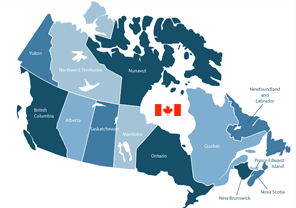Reprinted with permission from MHNI (Michigan Head Pain & Neurological Istitute),
Ann Arbor, Michigan, US
by James Weintraub, D.O. Neurologist and Sleep Disorders Specialist
What are the common sleep disorders?
Insomnia---Problems falling asleep or staying asleep, which can be the result of many different problems (eg., medical problems, life-style, psychological problems, or poor sleep habits). Chronic insomnia is defined as sleep disturbances lasting longer than three weeks. Obstructive sleep apnea---A disorder characterized by loud snoring during the night, periods in which a person may stop breathing during the night, and significant daytime sleepiness. This disorder usually results when the person is lying on their back and the oropharnynx (or airway) becomes partially obstructed. Obstructive sleep apnea may result in medical problems such as hypertension and heart problems. Sleep apnea is an underdiagnosed and undertreated problem in our society. It is more often seen in middle-aged men than women. Sleep apnea can be disagnosed by a nighttime sleep study and successfully treated predominantly with nasal CPAP (continuous positive air pressure), which involves the use of a mask and breathing machine during the night. Periodic limb movement disorder----A disorder characterized by jerking or restless movements of the legs that are severe enough to disrupt sleep during the night.
How are sleep and headache related?
Headache can be a presenting symptom of sleep disorders; conversely, many researchers have found an increrased incidence of sleep disturbance in chronic headache patients. There are various stages of sleep that we go through during the night. The most important stage in relation to headache is probably REM sleep. REM sleep, which occurs 4-6 times during the night, is the dreaming state of sleep. Migraine headaches occur in direct relationship to the number of REM sleep periods that one has during the night. This relationship is even more pronounced with cluster headaches.
Migraine headaches usually occur either during or after REM sleep or in delta sleep which is the deep sleep that we all require in order to feel alert and refreshed the following day. It remains unclear whether the changes in the neurotransmitter or chemical systems in the brain, hormonal influences, or a combination of several different phenomenon are the cause. From experiments in the 1950s it was discovered that people who were REM sleep deprived were more likely to develop some underlying psychiatric or depressive illness with or without headaches. It is suspected that certain chemicals in the brain not only play a role in the mechanism of migraine but also predispose people to awaken from REM sleep with a headache. Since decreased oxygen and transient hypertension are noted to occur with sleep apnea, it has been suggested that these factors can trigger early morning headaches. These headaches are typically located in the frontal areas but can be diffuse, involving the entire head.
Can sleeping more help headaches?
Either too much sleep or too little sleep can agravate headaches in any individual. Researchers believe that fluctuations in seratonin and other brain neurotransmitters occur during sleep, which in turn can influence the onset or aggravation of head pain.When a person vulnerable to headache sleeps late on the weekend, beyond the time they usuaslly awaken during the week, that extra amount of sleep may aggravate head pain. On the other hand, some patients discover that sleep is a relieving and therapeutic agent for their headache condition. Although some headache sufferers observe that napping can reduce headache pain (especially in adolescence), most adults find that daytime sleeping triggers headache. Also, frequent naps during the day may reduce sound sleep at night resulting in a morning headache. Patients should attempt to restrict daytime hours for activity and reserve daytime hours for activity and reserve night time hours for sleep. This approach, termed "sleep restriction" whereby an individual goes to bed and awakens at the same time each day, is an important component in managing headaches.
What other types of headache are affected by sleep?
Research has suggested that certain headache disorders are associated with different patterns of sleep disturbance, which may influence the response of treatment. There has been a link between the cyclical variation of cluster headache and chronic paroxysmal hemicrania, a certain type of one-sided headache, to the REM sleep cycle. Cluster headaches are one-sided severe headache attacks that are usually accompanied by nasal stuffiness and eye tearing, and frequently occur during the nighttime. There has been an association of these attacks to REM sleep and research has noted an increase of sleep apnea in patients who experience cluster headaches. In fact, in one report, patients who have cluster headaches and sleep apnea were also noted to have experienced bed-wetting and night terrors during childhood. In patients with cluster headaches who have sleep apnea, it is suggested that they may be experiencing an episodic decrease in oxygen during the night that can precipitate the headache attacks. In patients who have chronic cluster headaches, it is noted that two-thirds of the attacks usually occur during the last two hours of sleep.
Is there a relationship between headaches and sleepwalking?
In children who experience migraine headaches there has been an association with sleepwalking. Boys are more likely than girls to sleepwalk, although girls are more likely to experience headaches. The general poulation experiences a 1%-6% likelihood of sleepwalking, yet this rises to 30% in migraine patients. There have been suggestions that serotonin, a brain chemical that is believed to be involved in the generation of migraine headaches, may vary greatly in the brains of patients who sleepwalk and could be the connection between these two problems.
What is a sleep study and when are they ordered by physicians?
A sleep study (or polysomnography study) involves the measurement of a number of bodily responses during nighttime sleep (e.g., EEG or brain waves, EKG or heart rhythm, leg movements). These measures help the physician to make a diagnosis for the type of sleep disorder, If any. A related test, called a multiple sleep latency study, is performed during the day to measure how long it takes someone to fall asleep during the day and to assess the degree of daytime sleepiness. Editor's Note: At MHNI if your physician believes a sleep disorder exists and is affecting your headache condition (or general health), you will be referred to Dr. Weintraub for evaluation. Dr. Weintraub is board certified in the evaluation and treatment of sleep disorders. Sleep studies are conducted at Chelsea Community Hospital in Michigan. Before a sleep study is ordered, Dr. Weintraub will interview and examine a patient to review their sleep pattern and history. He will make a decision about whether further diagnostic testing, such as a sleep study, is recommended.
What treatment is available to help with the sleep and headache connection?
Research is ongoing to for anatomical, biochemichal and electrophysiological relationships between these two entities. It is believed that structures in the lower part of the brain, the brain stem, play a significant role in headache generation and normal sleep. When you discuss a headache problem with your physician, it is important that you give as much information as possible about your normal sleep patterns. It is important for the physician to be aware of the various sleep problems that can lead to increased severity of headache. Sleep apnea, sleep deprivation, and insomnia are common sleep problems that are associated with headaches. A structured and regular sleep schedule can help to decrease the frequency of headaches, given the impact of excessive sleep or sleep deprivation on triggering headaches. Medications known as tricyclic antidepressants have been found to be useful in treating both sleep disorders and headaches (consult a headache neurologist). However, it is best to avoid the use of benzodiazepines, which may aggravate sleep apnea, even though they may be helpful in the treatment of headaches. Hopefully, in the future a better understanding of the relationship between headache and sleep will be achieved as experiments in both fields try to help people with these problems.
www.MHNI.com
Published on the Help For Headaches Web Site
http://www.headache-help.org

